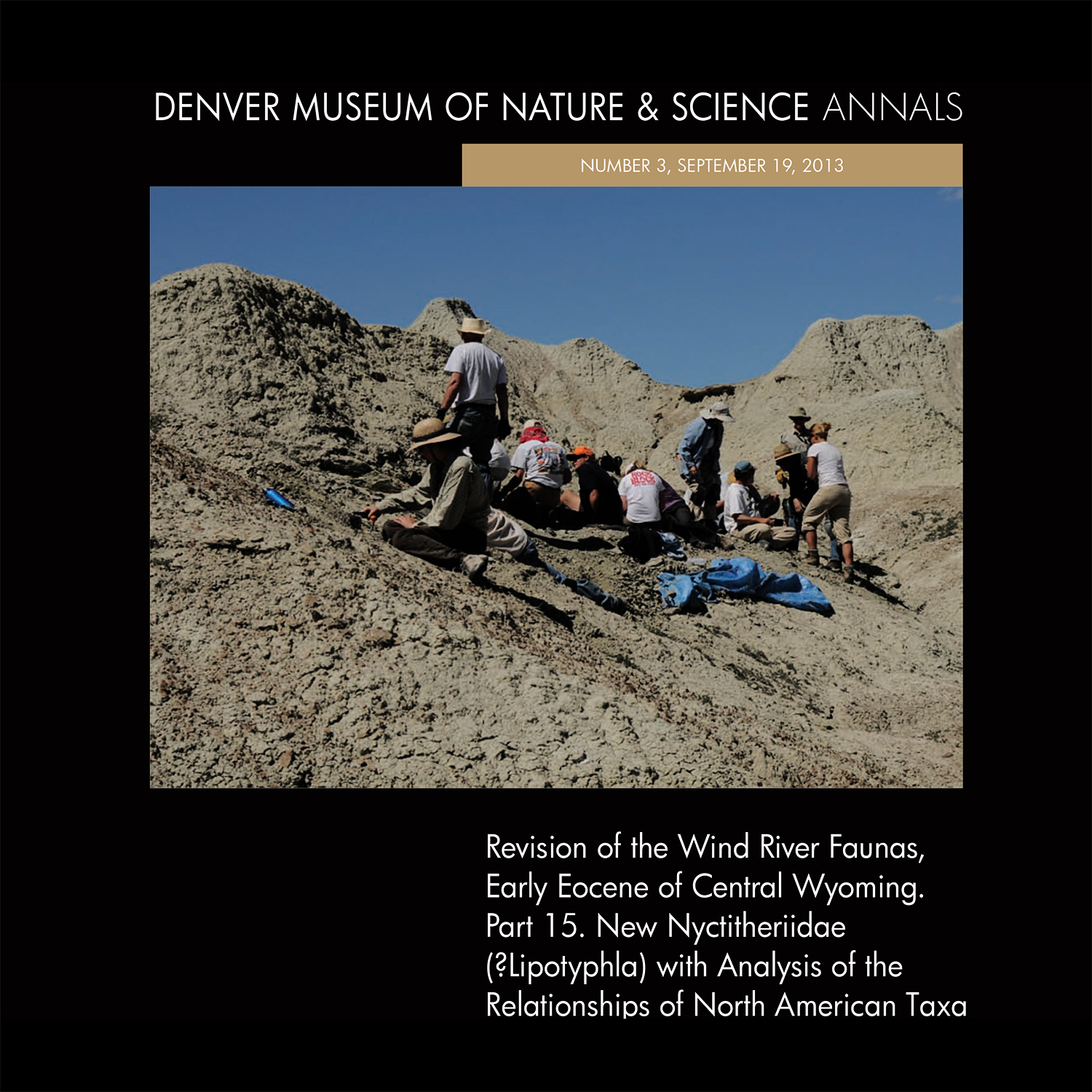
Annals 3: Revision of the Wind River Faunas, Early Eocene of Central Wyoming. Part 15. New Nyctitheriidae (?Lipotyphla) with Analysis of the Relationships of North American Taxa
Abstract
Among the fossilized remains of early Eocene mammals collected from the Buck Spring Quarries of Wyoming are the dentitions of several previously undescribed nyctitheriids. Comparison of this material (from the Lost Cabin Member of the Wind River Formation, late Wasatchian Land Mammal Age (LMA), Lost cabinian Land Mammal Subage (LMSA, Wa-7)) to closely related taxa requires the description of a new genus and species of nyctitheres, Acrodentis rosenorum, as well as a new species of Nyctitherium, N. krishtalkai. A. rosenorumis similar to closely related Nyctitherium and Leptacodon, but is set apart by its distinctively shaped anterodorsally curving paraconid, together with a protoconid and metaconid that project away from one another forming an open trigonid. In the upper teeth, the paracone and metacone also project in slightly different directions, suggesting the association of upper and lower molar morphology. The protocone is nearly centered laterally between the paracone and metacone, unlike Leptacodon, and the hypoconal shelf is less broadly expanded than in Nyctitherium. N. krishtalkai, though similar to N. velox and N. serotinum, differs from these species in that the cristid obliqua terminates where it strikes the postvallid, the hypoconulid does not as closely twin the entoconid, and the entoconid occurs slightly higher than the hypoconid. In the upper teeth, the conules and conular wings are more developed than in previously described species, the hypocones, though broadly expanded into shelves on M1–2, are less developed, and the paracone and metacone of M3are less reduced. The evolutionary context of these two new groups was investigated with a cladistic analysis based on dental characters, including species from the described genera Nyctitherium, Leptacodon, Plagioctenodon, Plagioctenoides, Pontifactor, Wyonycteris, and Limaconyssus. Palaeictopsspp. served as the outgroup. The results of this analysis suggest a close relationship between Acrodentis, Leptacodon, and Nyctitherium, in which A. rosenorumappears closely related to an ancestor intermediate between Leptacodon and Nyctitherium. N. krishtalkaiis the most primitive of its genus and is the most closely related to A. rosenorum. Whereas a cladistic analysis involving only nyctitheres should not be used as basis to divide the family, two major clades within the Nyctitheriidae of North America may exist: one including the genera Leptacodon, Plagioctenodon, Nyctitherium, and Acrodentisand the other including Wyonycteris, Limaconyssus, and “Plagioctenoides.”